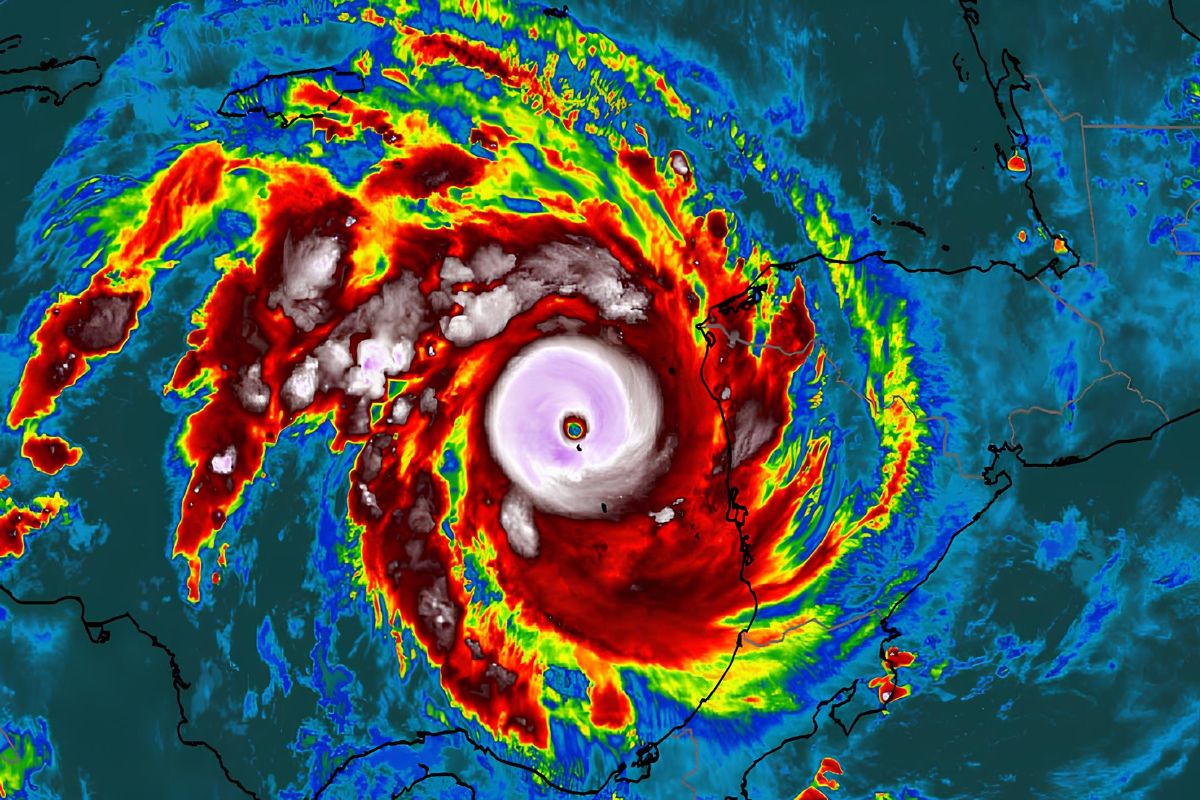
Weather forecasts are a crucial part of our daily lives, helping us plan everything from weekend outings to agricultural activities. But have you ever wondered how accurate these predictions are or what goes into making them? Weather forecasting involves a blend of science, technology, and a bit of educated guessing. Meteorologists use data from satellites, weather stations, and even balloons to predict the weather. They analyze patterns, historical data, and current conditions to give us the best possible forecast. Did you know that weather forecasts are generally more accurate today than they were a decade ago? This is thanks to advancements in technology and better understanding of atmospheric conditions. Let's dive into some fascinating facts about weather forecasting that might just change the way you look at the next weather report!
The Science Behind Weather Forecasting
Weather forecasting is a fascinating blend of science, technology, and a bit of educated guessing. Meteorologists use various tools and data to predict the weather.
-
Meteorologists rely on satellites: Satellites orbiting Earth provide crucial data about weather patterns, cloud cover, and storm development.
-
Weather balloons are essential: These balloons carry instruments high into the atmosphere to measure temperature, humidity, and pressure.
-
Supercomputers crunch the numbers: Advanced computers run complex models to simulate and predict weather patterns.
-
Doppler radar tracks precipitation: This radar system helps meteorologists see rain, snow, and storm movements in real-time.
-
Weather stations are everywhere: Thousands of weather stations worldwide collect data on local conditions.
Historical Weather Predictions
Weather forecasting has come a long way from ancient methods to modern technology.
-
Ancient Greeks used patterns: They observed cloud formations and wind directions to predict weather.
-
Farmers' Almanac: Published since 1818, it uses a secret formula to predict long-term weather trends.
-
Telegraph revolutionized forecasts: In the 19th century, telegraphs allowed for faster sharing of weather data.
-
First weather satellite: Launched in 1960, TIROS-1 provided the first satellite images of Earth’s weather.
-
Modern forecasting began in WWII: Military needs during the war led to significant advancements in weather prediction.
Interesting Weather Phenomena
Weather can be strange and surprising, with phenomena that can leave us in awe.
-
Ball lightning: Rare and mysterious, these glowing orbs appear during thunderstorms.
-
Frost flowers: Delicate ice formations that grow on plants and surfaces in freezing conditions.
-
Fire whirls: Tornado-like formations of fire, often seen during wildfires.
-
Thundersnow: A snowstorm accompanied by thunder and lightning.
-
Virga: Rain that evaporates before reaching the ground, creating streaks in the sky.
Extreme Weather Events
Extreme weather can have significant impacts on communities and the environment.
-
Hurricanes: These powerful storms can cause widespread destruction with high winds and heavy rain.
-
Tornadoes: Violent windstorms that can destroy everything in their path.
-
Blizzards: Severe snowstorms with strong winds and low visibility.
-
Heatwaves: Extended periods of excessively hot weather, often leading to health risks.
-
Floods: Overflowing water that can submerge land and buildings.
Weather Forecasting Tools
Various tools help meteorologists provide accurate weather forecasts.
-
Anemometers: Measure wind speed and direction.
-
Barometers: Measure atmospheric pressure, crucial for predicting weather changes.
-
Hygrometers: Measure humidity levels in the air.
-
Thermometers: Measure temperature, a fundamental aspect of weather.
-
Rain gauges: Measure the amount of rainfall over a specific period.
Fun Weather Facts
Weather can be fun and quirky, with facts that might surprise you.
-
The wettest place on Earth: Mawsynram, India, receives the most annual rainfall.
-
The driest place on Earth: The Atacama Desert in Chile has areas that have never recorded rainfall.
-
Hottest temperature recorded: Death Valley, California, reached 134°F (56.7°C) in 1913.
-
Coldest temperature recorded: Antarctica hit -128.6°F (-89.2°C) in 1983.
-
Snowflakes are unique: No two snowflakes are exactly alike.
Weather and Climate Change
Climate change is affecting weather patterns globally, leading to more extreme events.
-
Rising temperatures: Global temperatures are increasing, leading to more heatwaves.
-
Melting ice caps: Polar ice is melting, contributing to rising sea levels.
-
More intense storms: Climate change is causing more severe hurricanes and typhoons.
-
Changing precipitation patterns: Some areas are experiencing more droughts, while others see increased rainfall.
-
Ocean warming: Warmer oceans contribute to stronger and more frequent storms.
Weather Wonders: Final Thoughts
Weather forecasting is more than just predicting if you'll need an umbrella. From ancient methods to modern tech, it's a blend of science, history, and innovation. Meteorologists use satellites, radar, and computer models to give us accurate forecasts, helping us plan our days and stay safe during extreme weather. Understanding weather patterns can also help us appreciate the natural world and its complexities. Next time you check the forecast, remember the fascinating facts behind it. Weather impacts our lives in countless ways, from agriculture to daily commutes. Knowing a bit more about how forecasts are made can deepen your appreciation for this essential service. So, whether it's sunny skies or stormy weather, there's always something intriguing happening in the atmosphere. Stay curious, stay informed, and enjoy the wonders of weather!
Was this page helpful?
Our commitment to delivering trustworthy and engaging content is at the heart of what we do. Each fact on our site is contributed by real users like you, bringing a wealth of diverse insights and information. To ensure the highest standards of accuracy and reliability, our dedicated editors meticulously review each submission. This process guarantees that the facts we share are not only fascinating but also credible. Trust in our commitment to quality and authenticity as you explore and learn with us.
